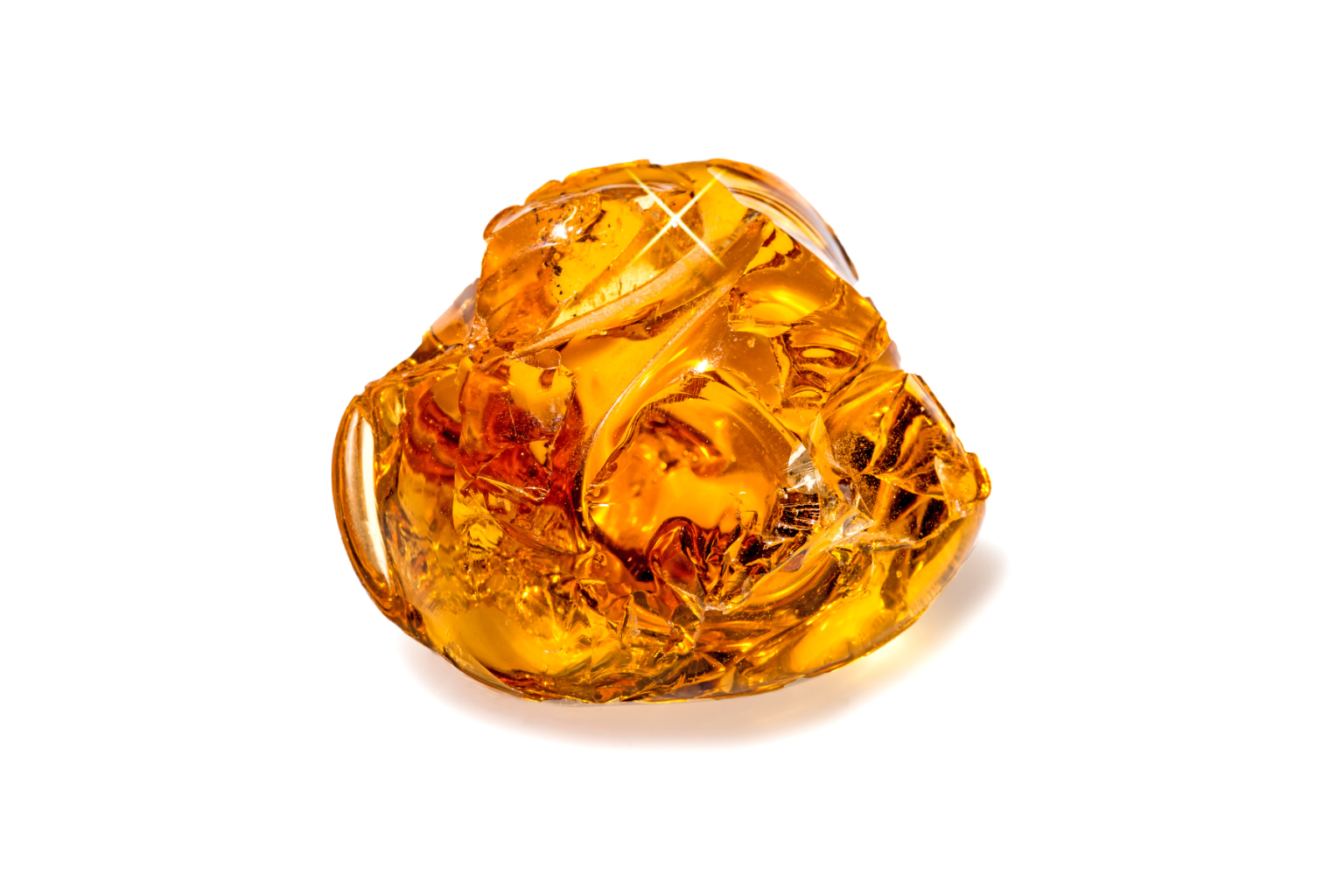How is amber formed?
Amber is made from the resin that trees produce as a defense mechanism against injury, infection, or pests. When a tree is damaged, it secretes the resin to seal the wound and protect itself from further harm. Over time, the resin hardens and becomes fossilized, turning into amber. This process can take millions of years and involves a series of complex geological and chemical changes.
First, the resin must be buried in sediment, such as sand or clay, to protect it from oxygen and other elements that can cause it to break down. As the sediment builds up over time, it puts pressure on the resin, causing it to heat up and undergo a process called polymerization. This process transforms the resin into a more stable, solid form that is resistant to decay.
As the resin fossilizes, it can trap small organisms, such as insects or plant matter, within its structure. These inclusions provide a wealth of information to scientists and historians about ancient ecosystems and the evolution of life on Earth. In addition, the unique beauty and rarity of amber have made it a valuable commodity for thousands of years.
Amber’s Appearance
Amber is a translucent to opaque, fossilized tree resin that can vary in color from yellow, brown, orange, red, and even green or blue. Its color is influenced by a number of factors, including the original color of the tree resin, the presence of impurities, and the length of time it has been buried underground.
Amber is typically hard and brittle, with a waxy or resinous luster. It can range in texture from smooth to rough and may have small cracks or fissures that give it a natural appearance. Amber often contains inclusions of plant matter, insects, or other debris that were trapped within the resin as it solidified. These inclusions can be highly detailed and provide a fascinating glimpse into ancient ecosystems and the evolution of life on Earth.
When held up to the light, amber can appear to glow or have a warm, honey-like color. Some types of amber, such as Baltic amber, are highly prized for their clarity and transparency, while others, such as Mexican amber, are valued for their rich, warm color and unique inclusions. Overall, amber is a beautiful and fascinating natural material that has captivated people for centuries.
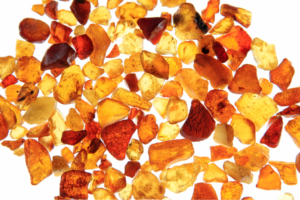 What types of amber are there?
What types of amber are there?
There are several different types of amber, each with its own unique characteristics and properties. Here are some of the most common types of amber:
- Baltic Amber: Baltic amber is the most well-known and abundant type of amber, and is found primarily in the Baltic region of Europe, including countries such as Poland, Lithuania, Latvia, and Estonia. It is highly prized for its clarity and range of colors, including yellow, orange, brown, and red.
- Dominican Amber: Dominican amber is found in the Dominican Republic, and is known for its unique blue color. It is believed to be one of the rarest and most valuable types of amber in the world.
- Mexican Amber: Mexican amber is found primarily in the Chiapas region of Mexico, and is highly valued for its rich, warm color and unique inclusions. It is often used for jewelry and decorative objects.
- Lebanese Amber: Lebanese amber is found in the Lebanon region of the Middle East, and is known for its unique green color. It is believed to be one of the rarest types of amber in the world.
- Burmese Amber: Burmese amber is found in the Hukawng Valley region of Myanmar, and is known for its high-quality and diverse range of inclusions, including insects, spiders, and even small dinosaurs.
- Siberian Amber: Siberian amber is found in the region of Yakutia in Russia, and is known for its clarity and transparency. It is often used for jewelry and decorative objects.
Each type of amber has its own unique properties and characteristics, making it a valuable and treasured material for a variety of purposes.
Amber’s Energy
In some traditional belief systems, amber is believed to possess various metaphysical properties and energies. It is often associated with warmth, healing, and vitality, and is said to help purify the body, mind, and spirit.
Some people believe that amber has a strong connection to the earth and can help ground and balance one’s energy. It is also thought to promote creativity, clarity of thought, and mental focus, making it a popular choice for writers, artists, and students.
In addition to its energetic properties, amber has also been used in folk medicine for centuries for its purported healing properties. It is said to have a calming effect on the nervous system and can help relieve stress and anxiety. It is also believed to promote a healthy immune system and can be used to treat various ailments such as headaches, asthma, and rheumatism.
More About the Metaphysical Properties
These properties can vary depending on the culture and tradition, but some of the most commonly associated properties include:
- Healing: Amber is often associated with healing and is believed to have a purifying effect on the body, mind, and spirit. It is said to help alleviate pain, inflammation, and other physical ailments, as well as to promote emotional well-being and mental clarity.
- Protection: Amber is also believed to have protective properties and can be used to ward off negative energies and spirits. It is said to create a shield around the body that helps repel negative energies and protect the wearer from harm.
- Grounding: Amber is associated with the earth element and is said to have a grounding effect on the body and mind. It is believed to help bring a sense of stability, security, and balance to the wearer, and to promote a deeper connection to the natural world.
- Creativity: Amber is thought to stimulate the creative process and inspire new ideas and insights. It is believed to enhance mental clarity and focus, and to help remove mental blocks that may be inhibiting creativity.
- Spirituality: Amber is sometimes associated with spiritual growth and enlightenment. It is said to help facilitate the connection between the physical and spiritual realms, and to promote a deeper understanding of the universe and one’s place within it.
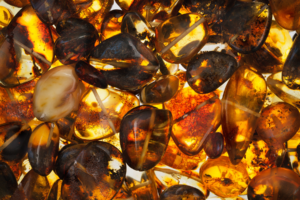 Ways to Harness the Energy of Amber
Ways to Harness the Energy of Amber
There are several ways that people use to harness the energy of amber for metaphysical or healing purposes. Here are some of the most common ways:
- Wearing amber jewelry: One of the most popular ways to use amber for its energy is to wear it as jewelry, such as necklaces, bracelets, or earrings. The energy of the amber is said to be absorbed through the skin and into the body, promoting healing and other beneficial effects.
- Carrying amber stones: Another way to harness the energy of amber is to carry small pieces of it in your pocket, purse, or on your person. The amber is believed to emit energy that can help promote emotional balance, mental clarity, and physical healing.
- Using amber for meditation: Amber can also be used as a tool for meditation and spiritual practices. Some people use amber stones or jewelry during meditation to help them connect with their higher self or to enhance their spiritual awareness.
- Burning amber incense: Amber incense is sometimes used to purify and cleanse the energy in a space. The scent of the incense is believed to have a grounding and calming effect on the mind and body, promoting relaxation and emotional balance.
- Placing amber around the home: Amber stones or jewelry can be placed around the home to promote positive energy and protect against negative energy. Some people believe that placing amber in a room can help purify the energy and promote a sense of calm and tranquility.
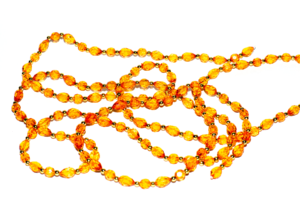 History of Amber
History of Amber
Amber has a rich history that dates back thousands of years. It has been highly prized for its beauty and rarity, and has been used for a variety of purposes throughout history.
The use of amber can be traced back to prehistoric times, when it was used for decorative and symbolic purposes by early humans. Amber artifacts have been found at archaeological sites around the world, and are believed to have played an important role in the rituals and beliefs of ancient cultures.
In ancient Greece, amber was believed to have magical properties, and was associated with the sun god Apollo. The Greeks used amber for decorative purposes, as well as for its supposed healing properties. It was also used as a perfume, and was sometimes burned as incense.
During the Middle Ages, amber was highly valued as a material for jewelry and religious objects. It was also used for medicinal purposes, and was believed to be effective in treating a variety of ailments, including headaches, asthma, and rheumatism.
During the Renaissance, the popularity of amber continued to grow, and it became a highly sought-after luxury item. It was used to create intricate carvings and jewelry, and was often given as a gift to royalty and other wealthy individuals.
Today, amber continues to be highly prized for its beauty and historical significance. It is used in the jewelry industry to create unique and striking pieces, and is also valued for its potential uses in scientific research, particularly in the study of ancient ecosystems and the evolution of life on Earth.
The Chakra of Amber
In some spiritual traditions, amber is believed to be associated with the solar plexus chakra, also known as the Manipura chakra. The solar plexus chakra is located in the upper abdomen, around the area of the diaphragm, and is associated with personal power, confidence, and self-esteem.
Amber is said to have a warm, nurturing energy that can help activate and balance the solar plexus chakra. It is believed to help promote feelings of self-worth, courage, and empowerment, and to help clear any blockages or imbalances in this chakra.
When the solar plexus chakra is in balance, a person may feel confident, self-assured, and capable of achieving their goals. They may also feel more connected to their inner wisdom and intuition, and may be better able to make decisions that are in alignment with their highest good.
If the solar plexus chakra is blocked or imbalanced, a person may experience feelings of low self-esteem, lack of confidence, and difficulty asserting themselves. They may also experience digestive issues, fatigue, or other physical symptoms.
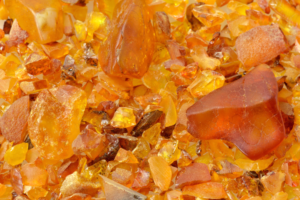 Summary
Summary
Amber is a unique and fascinating natural material that has captured the imagination of people for thousands of years. Whether used for its beauty, its perceived metaphysical properties, or its potential for scientific research, amber remains a treasured and valuable resource.

